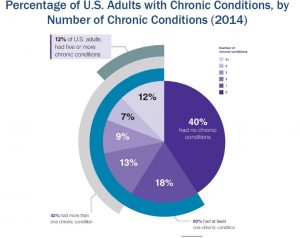
Communicable Diseases in the Workplace: A Comprehensive Guide
Communicable or infectious diseases are those that spread from person to person, often easily, such as through handshakes or from breathing in airborne particles exhaled by an infected individual. Communicable diseases may be chronic (such as tuberculosis or hepatitis) or acute (such as the flu or coronavirus) and can spread quickly throughout a workforce if immediate and correction actions are not taken.
Employers have a duty of care to provide a safe work environment that is also free from unlawful discrimination. It is imperative to have a policy and actionable plan in place that considers legally protected employees with chronic disabilities under the ADA, privacy issues of infected employees, recognition of risk, the reduction of employer liability and continuing operations.
Step 1: Notification and Verification
HR must be notified immediately that a communicable disease risk may exist to limit additional exposure and to reduce risk and liability for the employer. Policies should be in place to require immediate notification from supervisors, the infected employee and other employees who are made aware. For example, the Occupational Safety and Health Administration (OSHA) requires an exposure control plan to meet its bloodborne pathogens standard for employers that can reasonably expect a risk of exposure. Bloodborne pathogens are infectious micro-organisms in human blood that can cause disease. These pathogens include hepatitis B, hepatitis C and human immunodeficiency virus (HIV).
HR acting on behalf of the employer should:
- Confirm the source and verify the information.
- Obtain sufficient facts about the particular employee and his or her particular condition.
Employee self-notifies and protection under the ADA
When an employee informs the employer that he or she has a communicable disease that will affect his or her performance on the job, the employer can require a medical exam or health certification to confirm the illness, just as it can with any other ADA disability. After the examination, if the employer determines that the disease poses “a significant risk” to the health of others, the employer must consider every reasonable accommodation to eliminate that significant risk. If no such accommodation can be made, then the employer should take steps necessary to eliminate the significant risk. Employees have a reasonable expectation for privacy with all medical information. Throughout this process, the employer must keep the employee’s medical information, as well as information on any accommodations or leaves, confidential.
Only suspicion of infection
If an employee does not tell his or her employer that he or she has a communicable disease, the employer’s options are much more limited. Suspicion of a communicable disease is not enough to justify inquiry or a medical exam. However, the employer need not, and should not, make any decision that places its employees at significant risk of contracting a serious communicable disease. An employer must make sure that in its efforts to reduce the risks of contagion in its workplace, it does not violate the laws applicable. If there is due suspicion, employers should seek legal counsel immediately for the best response given the particular case.
Step 2: Understanding the Disease and Resources
Employers must understand the illness to respond appropriately. The particular facts regarding the contagion include how the disease is transmitted, probability of transmission and complications, level of severity, and duration of risk. To obtain information and medical expertise, employers can contact the Centers for Disease Control and Prevention (CDC), OSHA, state and local health departments, and employer resources such as in-house or contracted medical care facilities and the American Public Health Association publication Control of Communicable Diseases Manual.
Step 3: Identifying Scope of Risk
Employers must determine who is at risk for contracting the illness and consider any possible contacts, including those outside of the office, plant or any facility that is within employer control. Possible contacts include clients, the public or vendors that may have been exposed or infected. Employers must answer questions such as the following: How many people may be affected? What is the severity of the disease? How is the disease contracted?
Step 4: Determining Employer Response
Based on comprehensive disease research, management will have information to determine the severity in which to justify decisions such as an emergency shutdown, or if a limited threat, only a review of a department or single area. If employers have developed emergency preparedness plans (EPP) or disease management preparedness plans (DMPP), many decisions will already be prepared and mapped out for quick and thorough processes. These business continuity plans help employers keep the business running during periods of high absenteeism. See Managing Through Emergency and Disaster.
Step 5: Internal Matters and HR Compliance
Employers have employee and company relations matters as well as legal requirements to consider. Employers should seek legal counsel to identify legal risks, develop a plan to minimize liability and discuss any actions to include communications, employee response and privacy issues.
Company relations
Communications include all internal or external contact and notification to employees, the public, vendors and clients as well as any communications with family members of anyone hurt on the job or hospitalized as a result of a communicable disease. Careful consideration in these areas as well as review of all communications by an employer’s attorney or the assistance of the public relations department or public relations consultant will eliminate any misunderstandings that could result and will properly guide employee and public perception of the employer and its actions.
Employee relations
Employees have a reasonable expectation to privacy of all medical information and any leaves of absence or accommodations they receive. Employers must not provide names of those infected or whether anyone is on Family and Medical Leave Act (FMLA) leave or is receiving any ADA accommodations unless there is a business need to provide this information, such as to a specific manager of an employee who is infected. Concern and compassion for those infected or in fear of being infected is the best course of action. Employees will be concerned for their own health as well as for the health of their own families, which they do not want to also infect. Employers must determine what disease management benefits they can provide and inform employees quickly. General notice is appropriate so employees can monitor themselves for symptoms and seek treatment if needed. Employers may want to consider providing free employee screening for the disease, time off to see their own doctors, the option to telecommute or other options until the disease is contained and the threat eliminated. Constant communication to employees both in the office
SDGs, Targets, and Indicators
| SDGs | Targets | Indicators |
|---|---|---|
| SDG 3: Good Health and Well-being | 3.3: By 2030, end the epidemics of AIDS, tuberculosis, malaria, and neglected tropical diseases and combat hepatitis, water-borne diseases, and other communicable diseases | – Mention of tuberculosis and hepatitis as chronic communicable diseases – Reference to the Centers for Disease Control and Prevention (CDC) and the American Public Health Association publication “Control of Communicable Diseases Manual” as resources for understanding communicable diseases |
| SDG 8: Decent Work and Economic Growth | 8.8: Protect labor rights and promote safe and secure working environments for all workers, including migrant workers, in particular women migrants, and those in precarious employment | – Emphasis on employers’ duty of care to provide a safe work environment free from unlawful discrimination – Mention of Occupational Safety and Health Administration (OSHA) requirements for exposure control plans to protect against bloodborne pathogens |
| SDG 10: Reduced Inequalities | 10.2: By 2030, empower and promote the social, economic, and political inclusion of all, irrespective of age, sex, disability, race, ethnicity, origin, religion or economic or other status | – Reference to legally protected employees with chronic disabilities under the Americans with Disabilities Act (ADA) and the need for reasonable accommodations to eliminate significant risks |
Behold! This splendid article springs forth from the wellspring of knowledge, shaped by a wondrous proprietary AI technology that delved into a vast ocean of data, illuminating the path towards the Sustainable Development Goals. Remember that all rights are reserved by SDG Investors LLC, empowering us to champion progress together.
Source: shrm.org

Join us, as fellow seekers of change, on a transformative journey at https://sdgtalks.ai/welcome, where you can become a member and actively contribute to shaping a brighter future.






